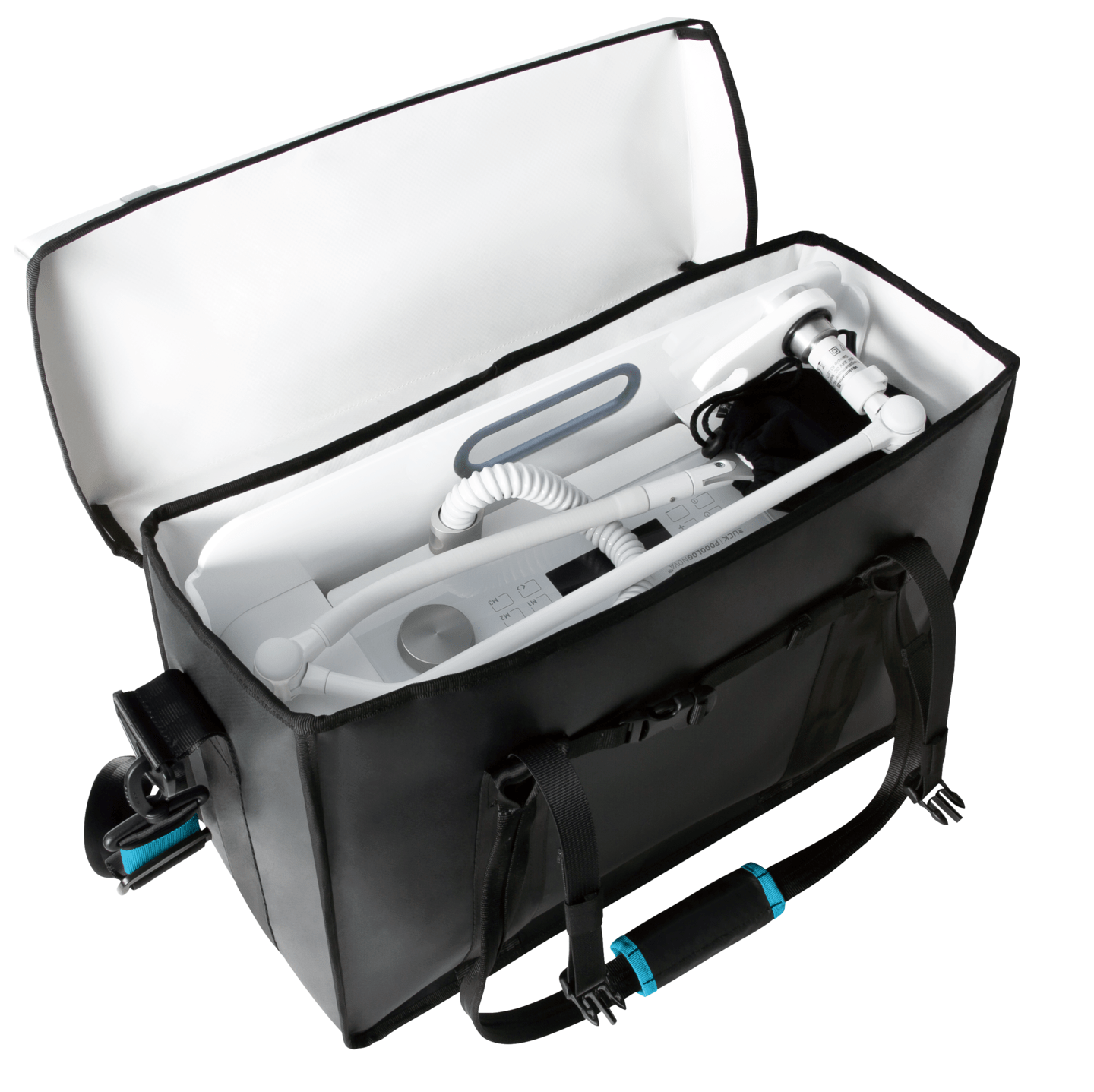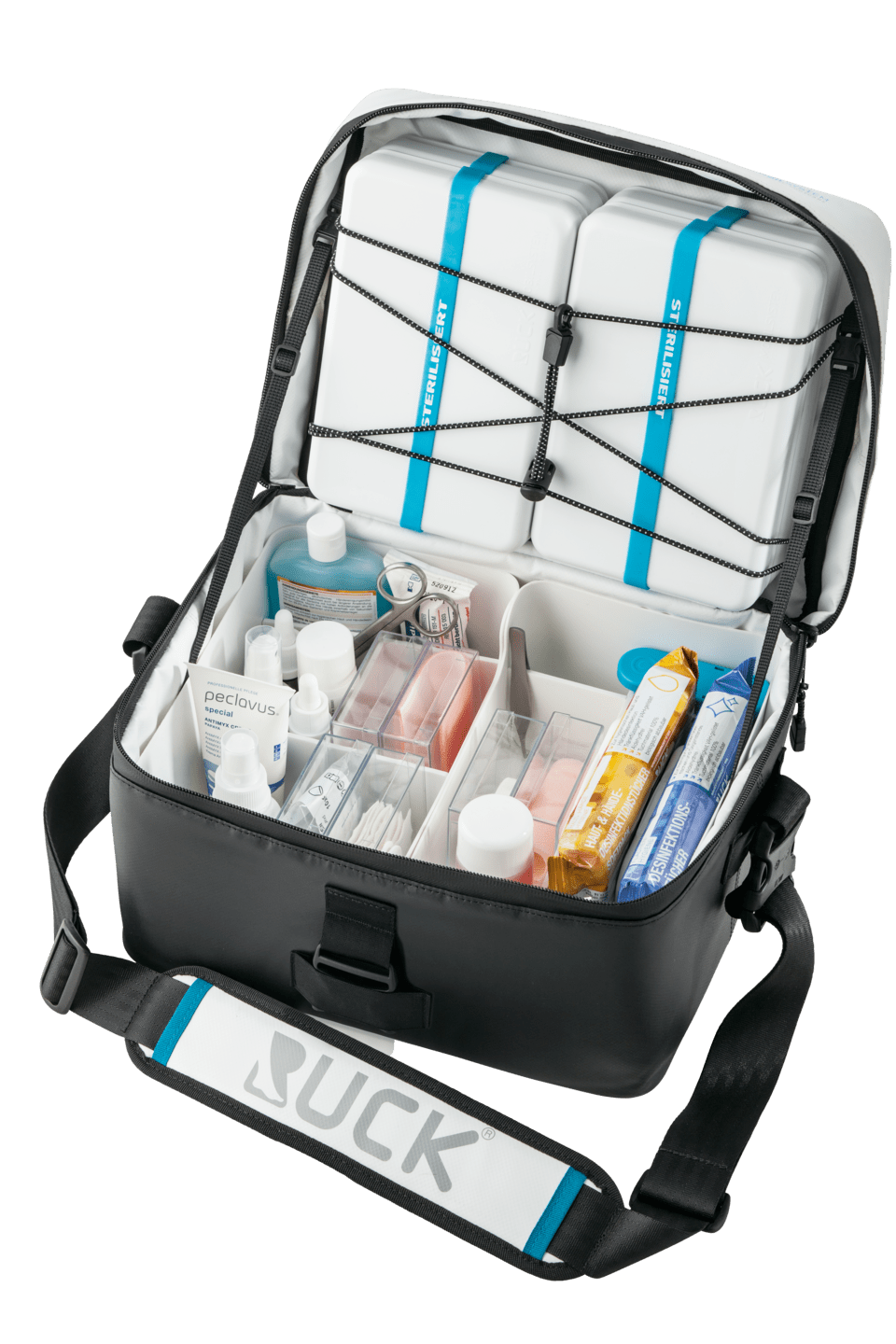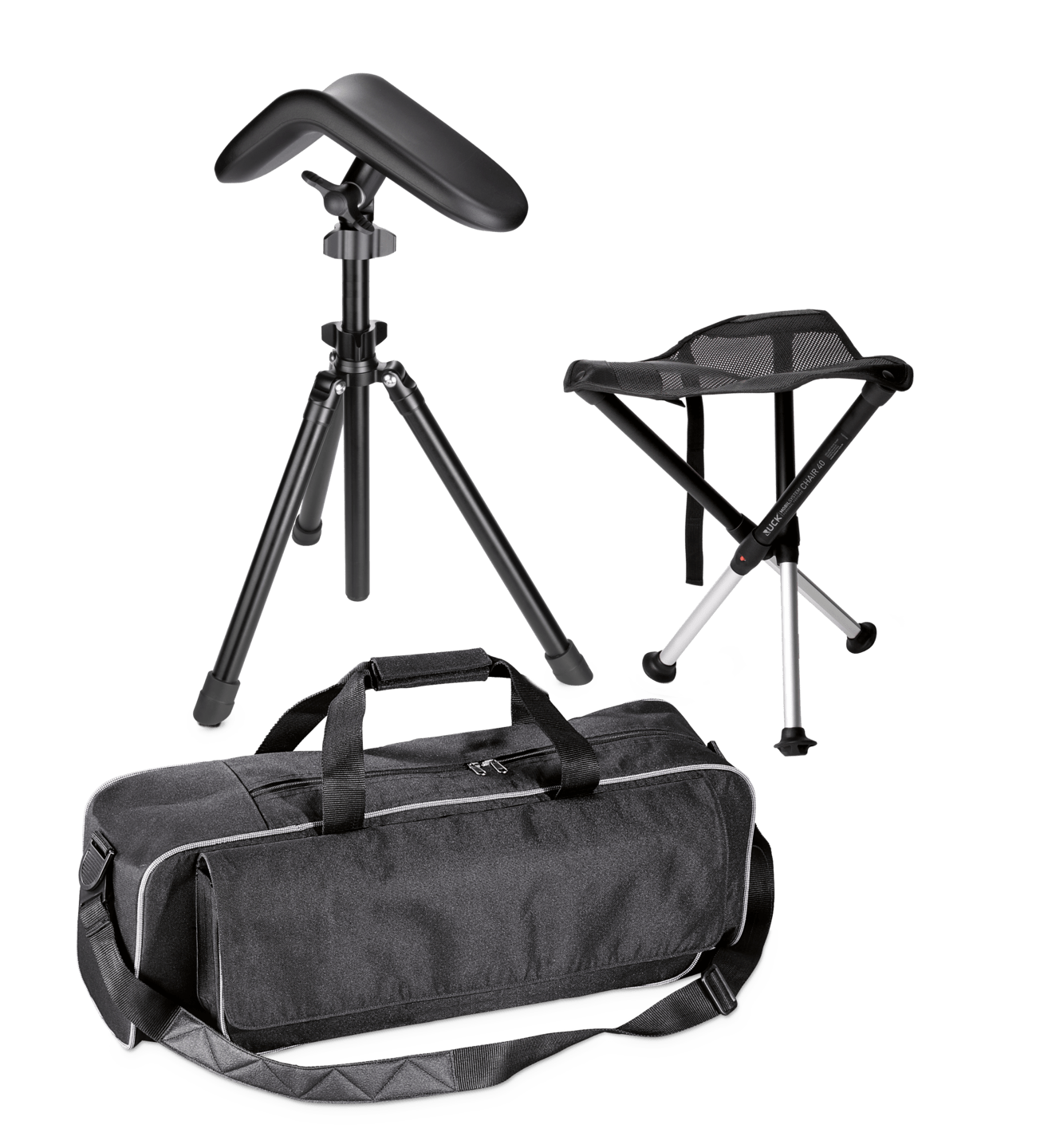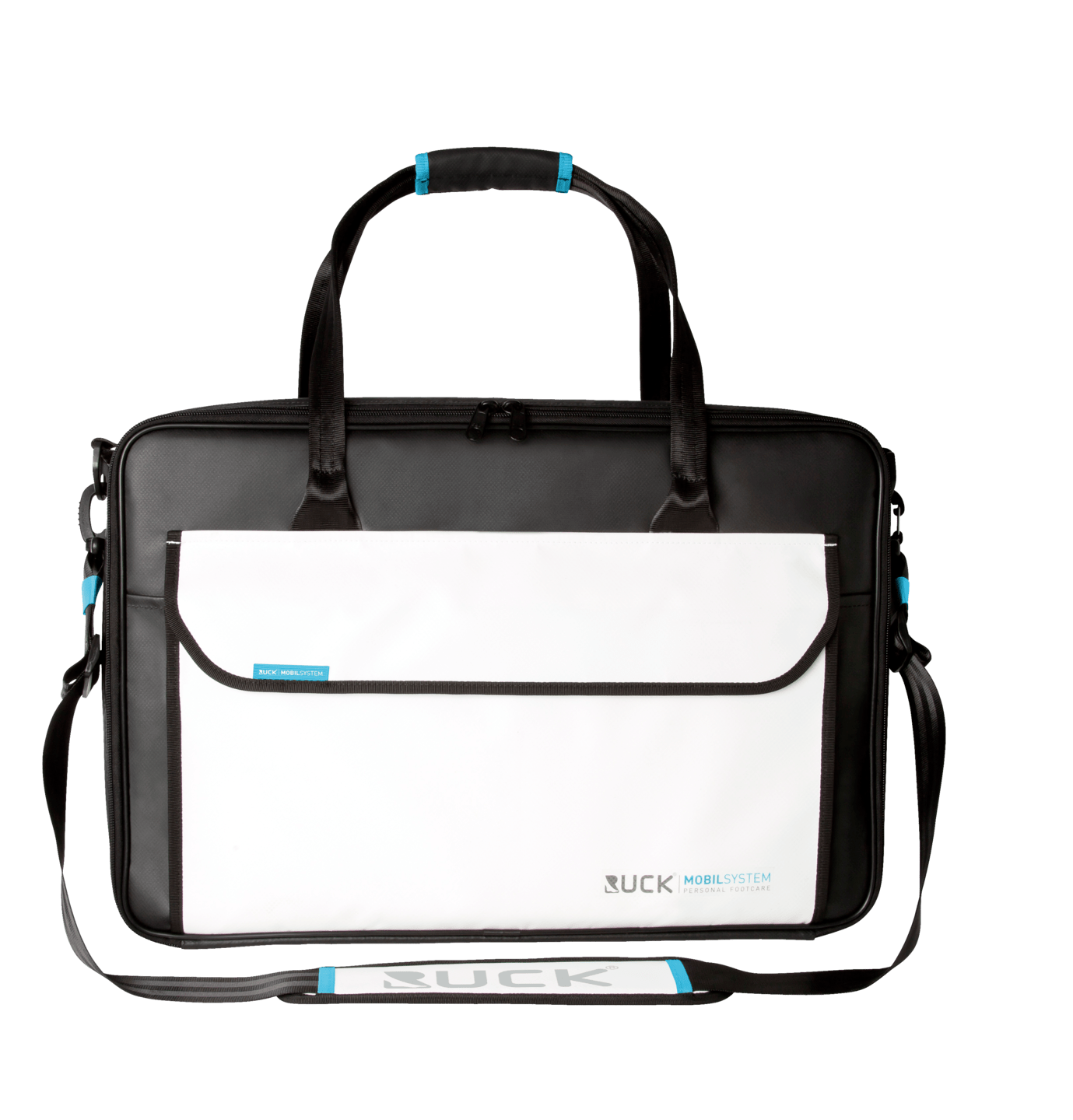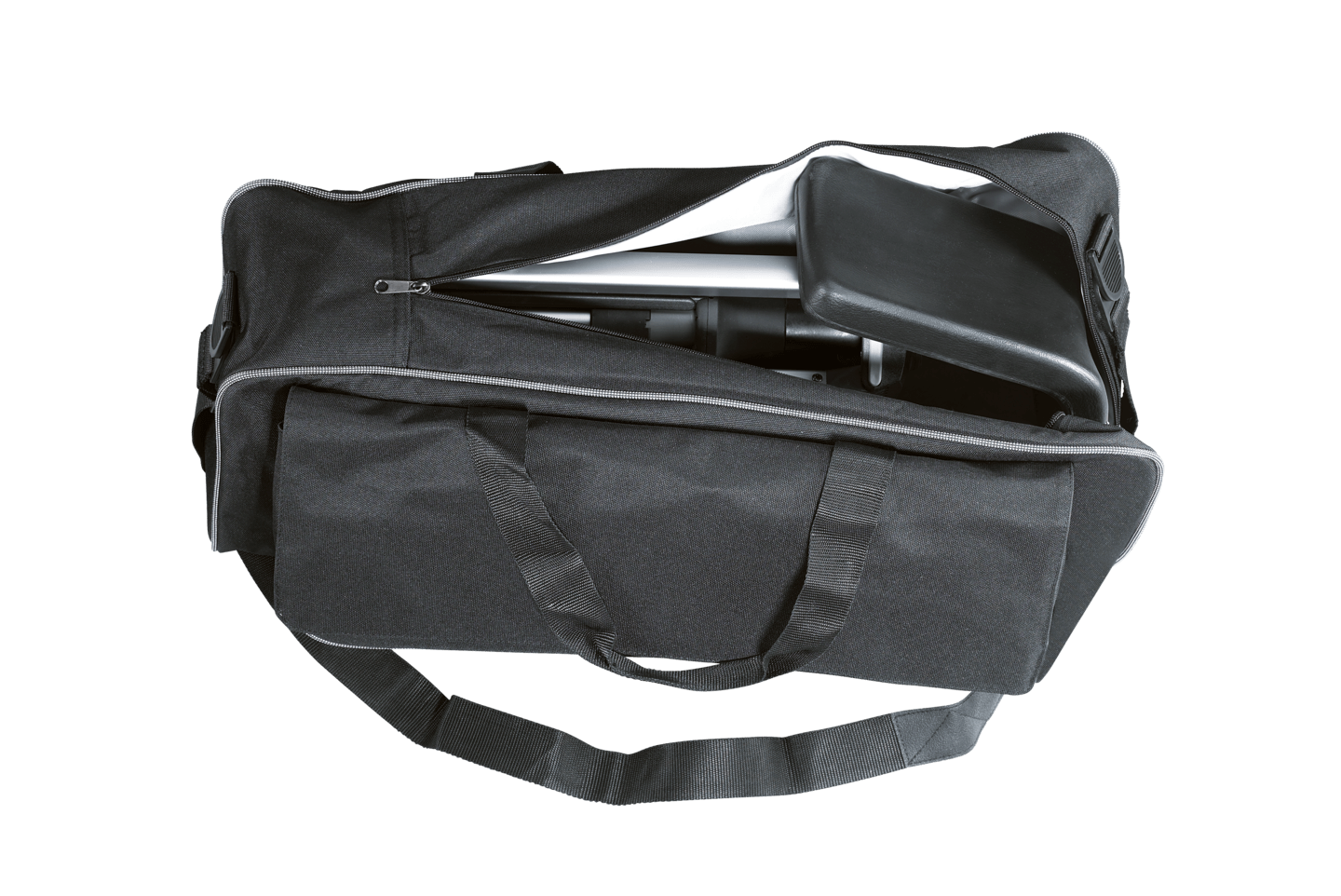How to work ergonomically during mobile podiatry
Ergonomics - more than just a word
In your daily work, you are dedicated to ensuring that your patients live with healthy feet. But for you to be able to continue this, it is imperative that you adapt your workplace to your physical needs. Without consideration of your personal well-being, the treatments, which last on average 45 minutes, cannot be carried out without causing long-term health problems. Fortunately, there is the subject of ergonomics: it is the science of optimal adaptation between people and technology in view of their working conditions.
Making adjustments is not as difficult as it seems. No matter what your budget looks like there are plenty of ergonomic solutions. In order to improve the conditions in your everyday professional life and to learn how to do mobile work in a back-friendly way, we have compiled the most important factors and valuable tips for you below.
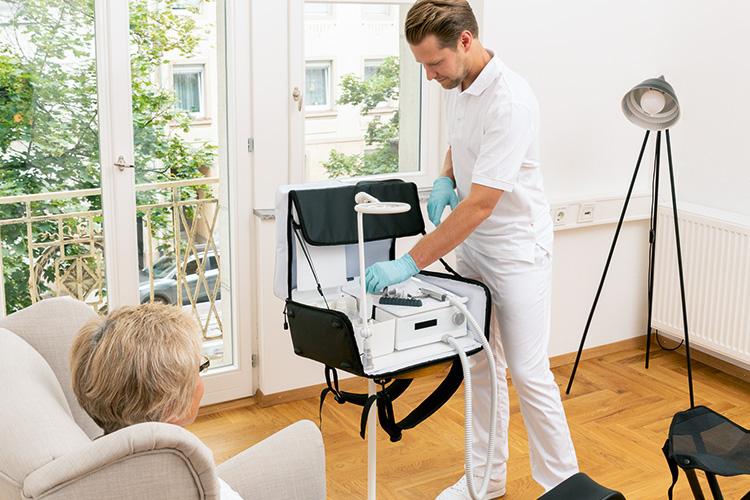
Why do mobile podiatry treatments in particular, pose an ergonomic challenge?
Extremely difficult ergonomic issues are found in mobile podiatry. If you are in your own practice room, it is up to you to adjust your environment ergonomically according to your own work processes - after all, it is easy to choose a sitting position that is back-friendly and to adjust the position of each patient’s foot. If, on the other hand, you work on a mobile basis, you have to adjust to the conditions of each new patient and each new home, i.e. your changing working environment. Here in particular, it is important not to lose sight of your own health, because your posture has an enormous influence on your health and can ultimately determine how long you stay fit and free of health problems.
However, we do not leave you alone with this task - the ability to work ergonomically is primarily provided by the products that you use every day. Be it the stool you sit on or the instrument you reach for: We at RUCK do our best to support you and your body.

On the move with heavy equipment
Older patients in particular are often no longer able to visit a podiatry practice due to health problems. Therefore, they are dependent on the mobile service. In addition, there are many people who very much appreciate this service and like to be treated within their own four walls - often an appointment is made for the whole family.
Whether by car or by bicycle - the complete set of equipment has to be packed in bags or in a briefcase and transported to the patient. This can quickly add up to a weight of around 20 kg. In principle, it is recommended to wear the load evenly on both shoulders. By distributing the load on both shoulders, the load balance is automatically controlled and this maintains the alignment of the spine. The great benefit of a bag backpack
solution is that the weight is located in the middle of the back and thus the strain is not one-sided. In addition, both hands stay free and ringing the doorbell or opening the door becomes easier. Often the equipment has to be moved up and down several flights of stairs to the place of use. This can be remedied by a transporter which has wheels that are as large as possible.
Quick tip: If using a car, one principle is to take only what is really needed on site. All that is not immediately needed during treatment, such as instruments for later treatments and replenishment supplies, can be stored in the car in the Supplies Unit. You will certainly benefit hugely from this!

The three ergonomic reach zones
According to the “Ergonomics Data Base” of the German Institute for Occupational Safety and Health, every workplace should be optimally set up by observing defined movement zones. In mobile podiatry, this results in the identification of three ergonomic reach zones, which characterise the space within which you can reach all work areas and materials easily and without constant twisting of your body.
The first zone describes the direct access, i.e. the area that is located directly in front of you, approximately at the level of your navel. Ideally, the sitting position is upright and allows you to work close to your body with relaxed shoulders.
The second zone is the extended work centre and encompasses everything that you can easily reach without having to strain. All instruments and work materials that are used frequently are should be placed in this zone. You should be able to reach all items easily with your arm not fully extended.
The third zone is accessible to you with an extended arm and can be reached and operated with one hand. Typically, skincare products or products that are not frequently used are placed here.
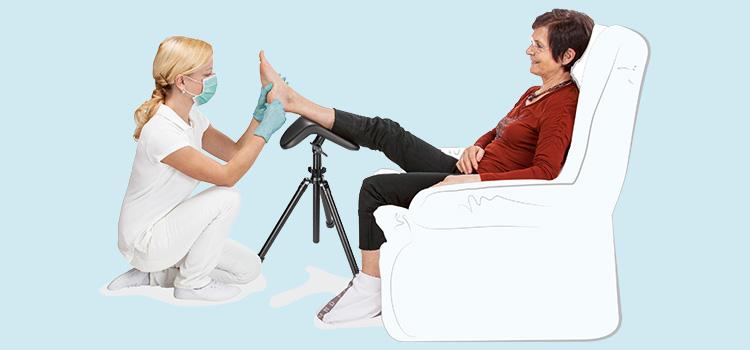
Low position
This position is suitable for patients with limited mobility. You kneel on the floor in front of the patient’s foot. One of your legs is raised and your knee serves as a support for the arm at the elbow.
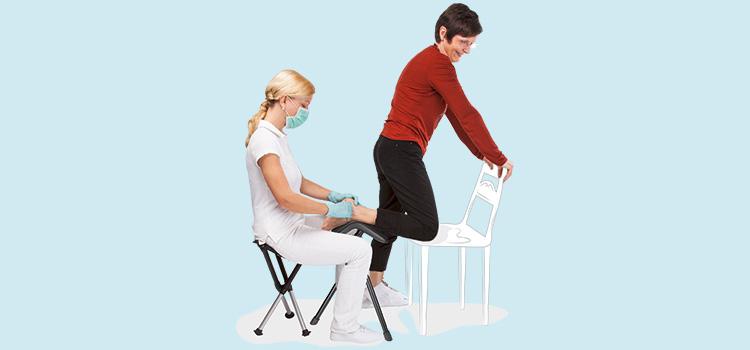
Treating the heels
The patient stands with one leg kneeling on a chair. In combination with the RUCK Footrest, this allows the heel to positioned perfectly. Understandably, this is only usually possible with patients that have a certain degree of agility.
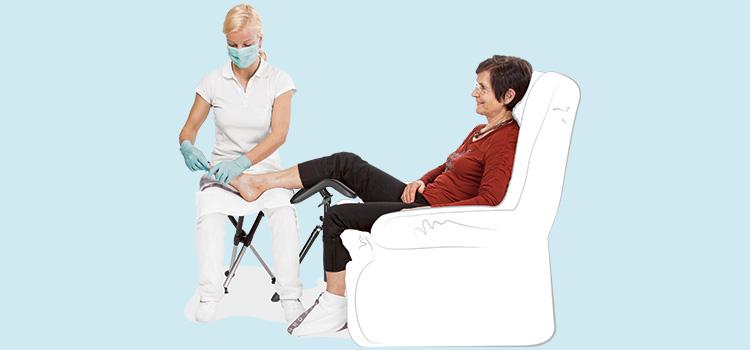
Overhanging leg
With the adjustment function, the RUCK MOBIL SYSTEM allows the leg to hang over at the knee joint. This is very comfortable for older patients in particular and allows you to work from the side.
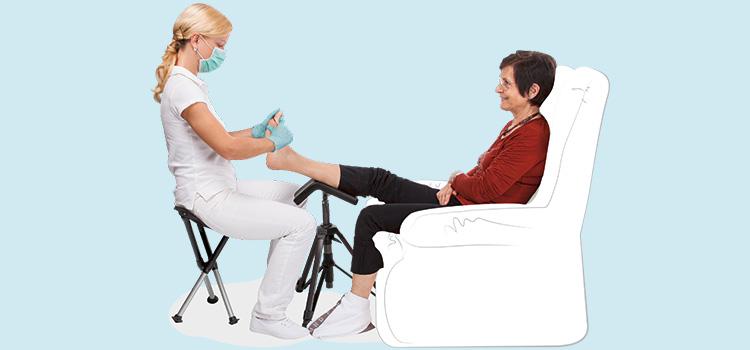
Treating the plantar surface
In this working position, you sit in front of the foot whilst keeping your back straight. This is ideal for treating the plantar surface of the foot.
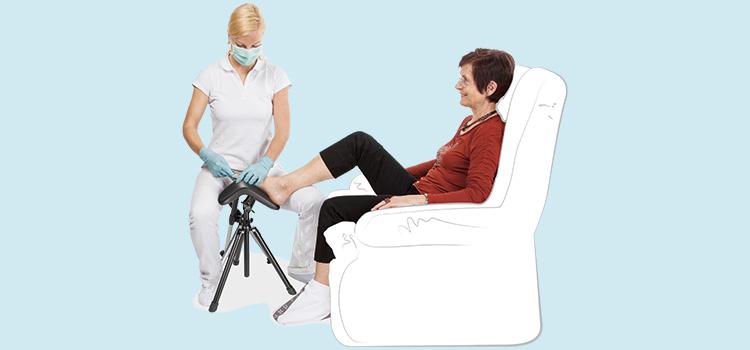
Treating the nails
You sit at a right angle to the patient. The footrest should be between your legs and the patient’s leg is supported by your knee.
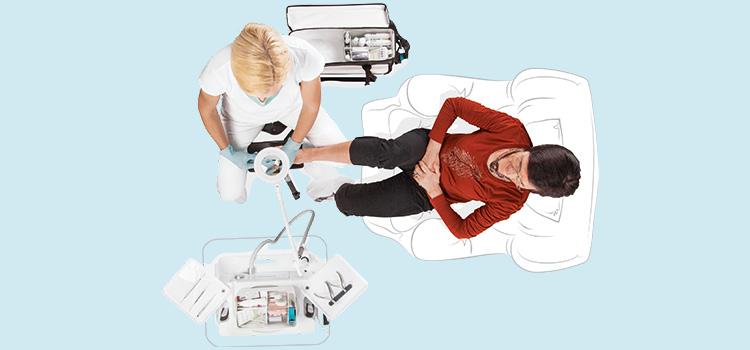
Maintaining the right posture
For a healthy working posture and fatigue-free work, wherever possible, you should observe two important rules: Work from the side with a rounded arm position and work within movement radius of 2 x 2 metres.
Unfamiliar spaces
When treating feet in unfamiliar spaces, you need not only sensitivity to your surroundings but also considerable talent for improvisation. Especially during the first contact, you have to expect surprises: be it the search for an electric socket, lighting or a distant water source. The treatment always starts with an initial assessment of the patient’s medical history, i.e. a visual examination of the feet. Ideally, this should be followed by a foot bath to ensure the necessary hygiene. As in most cases, the patient can provide towels and a suitable bowl. However, a foldable footbath bowl can be brought as part of your equipment as well. A place for the patient to sit is usually quickly located: A chair or even your favourite armchair, if possible not too low. With a footrest and folding stool, you can get into a starting position in front of it.
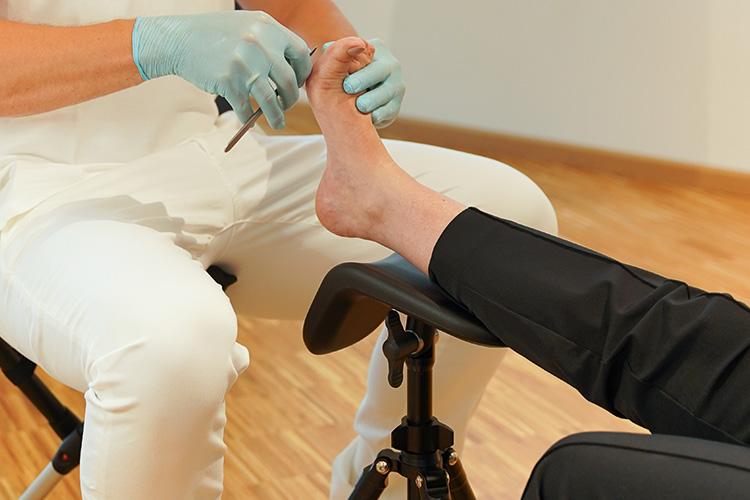
Support from your patient
During mobile podiatry treatments, you are often forced to twist and turn your body in all possible directions in order to reach your work area easily and at the same time make the treatment as comfortable as possible for the patient. Here it is particularly important not to forget your own health and to adopt as ergonomic and back-friendly a posture as possible. The patient can also be asked to participate, because often they are not even aware of the problem but is more than willing to help and support you.
In addition to adequate room to move, good lighting is particularly important. A compact magnifying lamp provides a clear view during treatment and should therefore be part of your basic equipment. However, good background lighting is a welcome bonus.
“Stomach in - chest out!” It’s an overused phrase but such an important one to remember - because keeping an upright posture keeps your back healthy.
A straight back for a healthy posture
“Stomach in - chest out!” We have all heard this before! If you constantly put uneven strain on your spine due to a bad posture, sooner or later you will suffer with muscle strain and even unevenly worn joints. To get a feeling for a straight posture, try the following exercise:
Step 1: Use a chair and exhale while simply slumping your upper body. Assume the “slouching posture”.
Step 2: In the next step, breathe in while straightening your upper body again, pulling your shoulders and chin back. This might not seem very comfortable and feels a little unusual, but you are now sitting up straight. Internalise this posture and try to adopt it again and again throughout the day.
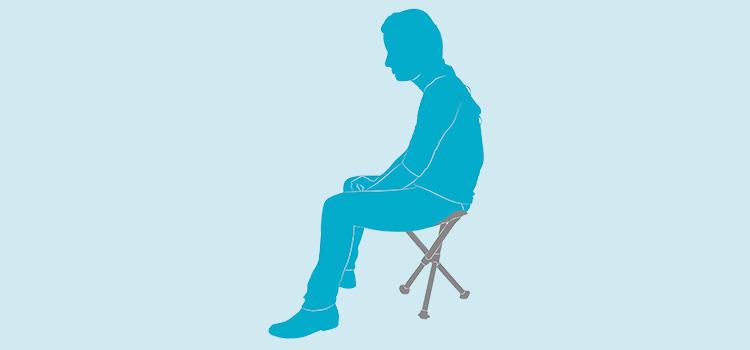
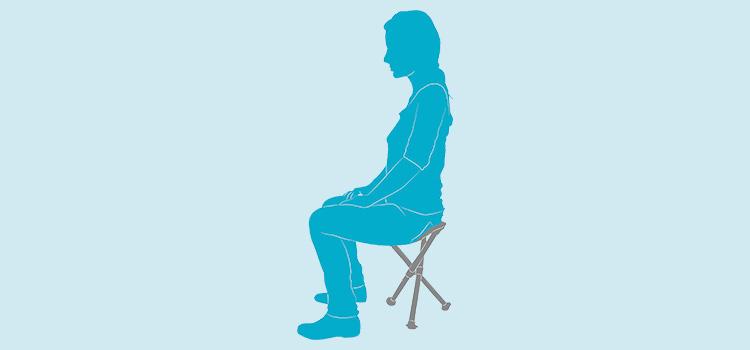
The right choice of instrument: Why ergonomic working is also located in your hands
As a podiatrist, you work on patients’ feet for up to ten hours a day. That’s approximately 1,800 hours a year. The most important “tools” are your hands. The concentrated work on the feet requires a lot of strength and endurance, which also strains the muscles of the arms, shoulders and neck. Hunched postures and strenuous manual work take their toll: tension, hand, arm and back pain are common. In the long term, there is a risk of permanent damage such as the dreaded carpal tunnel syndrome and other repetitive strain injuries. But this can be counteracted by conscious and ergonomic working with the hands.
Our hands are an anatomical masterpiece. Gripping powerfully or threading the finest yarn - everything is easy for them. The hand is made up of 27 individual bones, over 30 muscles and tendons, nerves and blood vessels. Their delicate construction with thin bones and little protective muscle and fatty tissue makes hands easily vulnerable. The high daily strain often leads to wear-related health problems. No wonder, because in the course of our lives our fingers are bent and stretched about 25 million times.






















































